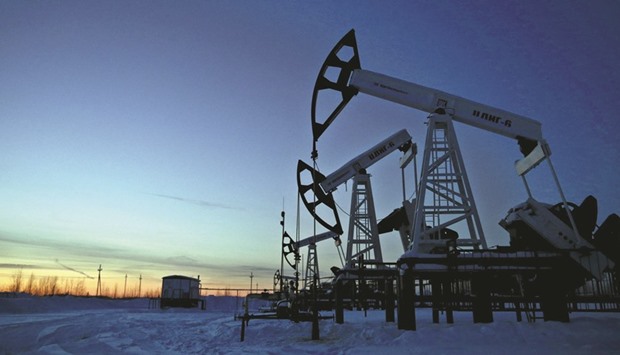Russia’s oil production rose 0.3% to 10.91mn bpd in March, its highest level in nearly 30 years, raising questions over Moscow’s commitment to freeze output ahead of a producers’ meeting in Doha later in April.
Energy Ministry data yesterday showed that in tonnes, oil output reached 46.149mn in March versus 43.064mn, or 10.88mn bpd, in February.
Leading oil producers, including Russia, are due to meet in Doha on April 17 for talks on how to freeze oil output at the average levels reached in January to support the global market.
But the increase in Russian output to levels not seen since 1987, when it reached a record high of 11.47mn bpd, suggests it may prove difficult for Moscow to stick to oil output freeze commitments.
Some oil industry observers said that it would be hard for Russia to stick to an output freeze since the domestic industry is dominated by several big oil companies such as Rosneft, Gazprom and Lukoil; each with its own agenda.
The Energy Ministry declined immediate comment on the data.
The latest production statistics showed that companies, categorised by the ministry as “small producers” were behind the higher production total, with an increase of 1.5% to 4.92mn tonnes (1.16mn bpd) in March. An 11.9% rise in output from joint ventures with foreign oil companies also contributed to the increase in the total production figure.
Oil output under production sharing agreements, designed in the 1990s to encourage investment by foreign oil companies, jumped to 1.51mn tonnes (357,000 bpd) last month.
Output from major Russian oil companies fell last month, lead by a 0.7% output decline at world’s biggest listed oil producer Rosneft. Output at Lukoil and Surgutneftegaz edged down by 0.1.
Rosneft has said it plans to keep production unchanged this year after it fell by 1% in 2015.
Natural gas production was at 53.98bn cubic metres (bcm) last month, or 1.74 bcm a day, versus 52.92 bcm in February.

Pump jacks are seen at the Lukoil-owned Imilorskoye oil field, as the sun sets, outside the West Siberian city of Kogalym, Russia, in this January 25, 2016 file photo. Some oil industry observers said that it would be hard for Russia to stick to an output freeze since the domestic industry is dominated by several big oil companies such as Rosneft, Gazprom and Lukoil; each with its own agenda.


